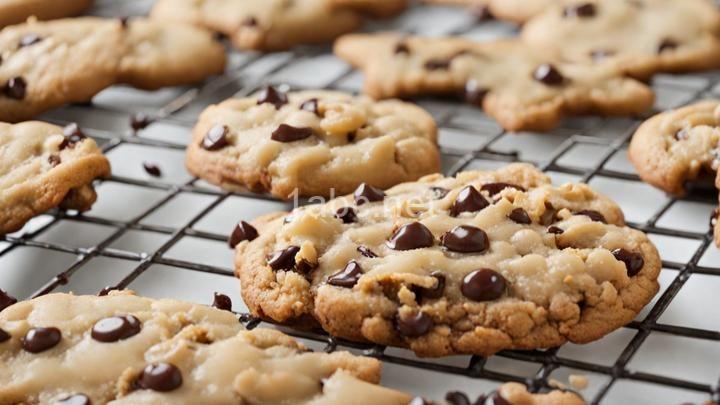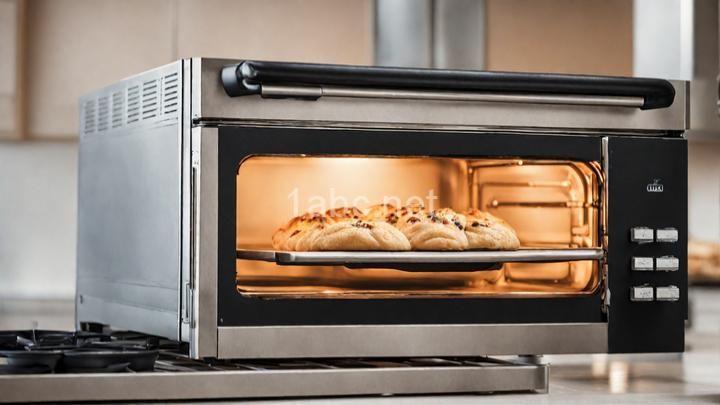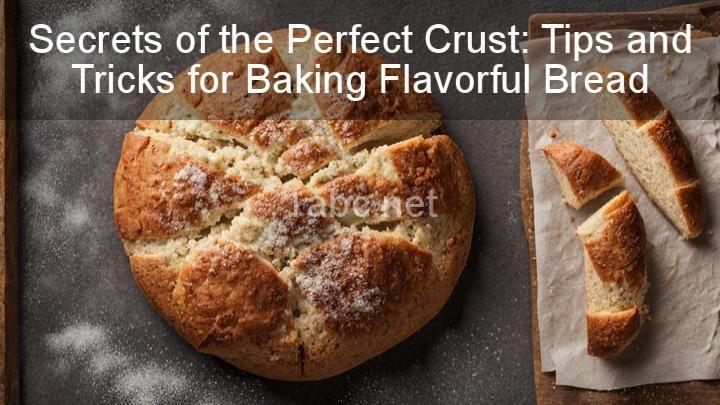Master the Art of Chewy Cookie Baking: Expert Tips and Tricks

Introduction:
Welcome readers to this blog post on mastering the art of chewy cookie baking. If you're a fan of soft, chewy cookies that melt in your mouth, then you're in the right place! We'll be diving into the science behind creating the perfect chewy cookie, sharing tips on choosing the right ingredients, exploring mixing techniques, discussing the perfect bake, and providing additional tips and tricks to help you achieve cookie perfection. So grab your mixing bowls and let's get baking!
I. Understanding the Science Behind Chewy Cookies:
To truly master the art of chewy cookie baking, it's important to understand the science behind it. The texture of a cookie is influenced by various ingredients and baking techniques. Fats, sugars, and liquids all play a role in creating that delightful chewiness. The amount and type of fats used can affect the tenderness of the cookie, while sugars contribute to moisture retention. Additionally, the Maillard reaction, a chemical reaction between sugars and proteins, creates rich flavors and a chewy texture.
II. Choosing the Right Ingredients:
When it comes to baking chewy cookies, using high-quality ingredients is key. Opt for fresh and unexpired ingredients to ensure the best results. Different types of sugars, such as granulated and brown sugar, have unique properties that can affect the chewiness of your cookies. Experiment with the ratios of these sugars to find your desired texture. Fats like butter, margarine, or shortening also contribute to the chewiness of your cookies. Butter, with its higher moisture content, tends to create a softer and chewier texture.
III. Mixing Techniques for Chewy Cookies:
The way you mix your cookie dough can greatly impact the final texture. Creaming butter and sugar properly is crucial for achieving chewy cookies. Creaming incorporates air into the dough, resulting in a lighter texture. Be sure to beat the butter and sugar until light and fluffy, which usually takes a few minutes. Alternatively, you can try recipes that call for melted butter or oil for a slightly different texture. Just be mindful of the impact on flavor and spread.
When it comes to incorporating dry ingredients, it's important not to overmix. Overmixing can lead to tough cookies. Mix until the ingredients are just combined, and resist the urge to keep mixing. This will ensure a tender and chewy texture.
IV. The Perfect Bake:
To achieve the perfect chewy cookies, proper baking techniques are crucial. Preheating your oven to the correct temperature is essential. This ensures that the cookies bake evenly and develop that chewy texture. As for dough chilling, it can help prevent excessive spreading. Chill the dough for at least an hour, or even overnight, to allow the fats to solidify and create a more controlled spread. When baking, use parchment paper or silicone mats on baking sheets to promote even heat distribution and prevent sticking.
V. Additional Tips and Tricks:
Now that you have the basics down, let's explore some additional tips and tricks to elevate your chewy cookies. Experiment with different flavors, such as classic chocolate chip or comforting oatmeal raisin, while keeping that chewiness intact. You can also add mix-ins like nuts or dried fruits to enhance both texture and flavor.
If you encounter common troubleshooting issues like overbaked cookies or excessive spreading, don't worry! There are practical solutions. If your cookies are coming out too crispy, reduce the baking time or lower the oven temperature slightly. If your cookies are spreading too much, try increasing the flour or chilling the dough for a longer period.
Conclusion:
Congratulations! By following these expert tips and tricks, you're well on your way to becoming a master of chewy cookie baking. Remember, baking is a delicious science that allows for creativity and experimentation. Use this knowledge as a foundation and feel free to explore variations that suit your personal taste. Whether you're baking for yourself, loved ones, or special occasions, the joy of biting into a perfectly chewy cookie is truly unparalleled. So go forth, experiment, and happy baking! Thank you for joining us on this baking adventure.
FREQUENTLY ASKED QUESTIONS
How can I make my cookies chewy and soft?
To achieve chewy and soft cookies, there are a few key tips to keep in mind. First, make sure to use a higher ratio of brown sugar to white sugar in your recipe. Brown sugar contains more moisture, which helps create a softer texture. Another trick is to slightly underbake your cookies. This allows them to stay moist and chewy in the center. Keep a close eye on them towards the end of the baking time, as they can quickly go from underbaked to overbaked.
Adding an extra egg yolk to the dough can also contribute to a softer texture. The egg yolk adds richness and moisture to the cookies, resulting in a chewier consistency.
Additionally, consider using cake flour instead of all-purpose flour. Cake flour has a lower protein content, which leads to a more tender and soft cookie.
Lastly, be mindful of how you measure your flour. Over-measuring can result in dry and tough cookies. Use a spoon to lightly scoop the flour into the measuring cup and level it off with a knife for a more accurate measurement.
By following these tips and techniques, you'll be able to enjoy deliciously chewy and soft cookies every time. Happy baking!
Can I substitute margarine for butter in my cookie recipe?
Yes, you can substitute margarine for butter in your cookie recipe. Margarine has a similar texture and fat content to butter, so it can usually be used as a 1:1 replacement. However, keep in mind that margarine may alter the taste and texture of your cookies slightly. If you prefer the flavor of butter, you may want to use a combination of margarine and butter or try a different recipe that specifically calls for margarine.
How do I prevent my cookies from spreading too much?
To prevent your cookies from spreading too much, there are a few tips and techniques you can try:
-
Chilled Dough: Start by chilling the cookie dough before baking. This helps to solidify the fat in the dough, which reduces spreading. Wrap the dough tightly in plastic wrap and refrigerate for at least 30 minutes, or even overnight.
-
Proper Butter Temperature: Ensure that your butter is at the correct temperature. It should be softened, but not melted. Softened butter helps to create air pockets in the dough, which can minimize spreading.
-
Flour Measurement: Be mindful of the amount of flour you use. Too little flour can cause the dough to be too wet and spread excessively. Measure your flour accurately, using the spoon-and-level method to avoid packing it down.
-
Baking Sheet Preparation: Make sure your baking sheets are cool before placing the cookie dough on them. Using warm or hot sheets can cause the dough to spread too quickly. If you have multiple batches to bake, allow the baking sheets to cool completely between batches.
-
Parchment Paper or Silicone Mat: Line your baking sheets with parchment paper or a silicone baking mat. These non-stick surfaces help to prevent excessive spreading by providing some insulation and preventing the cookies from sticking to the pan.
-
Proper Spacing: Leave enough space between each cookie dough ball on the baking sheet. As the cookies bake, they will spread out, so giving them enough room to expand will help prevent them from merging together.
-
Oven Temperature: Ensure that your oven is properly preheated to the correct temperature. If the oven is too hot, the cookies may spread too quickly. Use an oven thermometer to verify the accuracy of your oven's temperature.
-
Baking Time: Pay attention to the baking time. Overbaking can cause the cookies to spread more. Remove the cookies from the oven when they are lightly golden around the edges but still slightly soft in the center. They will continue to set as they cool.
By following these tips, you should be able to minimize spreading and achieve perfectly shaped cookies. Happy baking!
What is the best way to store chewy cookies?
The best way to store chewy cookies is to keep them in an airtight container at room temperature. This will help to maintain their moisture and prevent them from becoming stale. If you prefer your cookies to be slightly warm and gooey, you can also store them in a microwave-safe container and reheat them for a few seconds before enjoying. Just be sure to let them cool slightly before eating to avoid any burns. Remember, proper storage is key to maintaining the delicious chewiness of your cookies!


